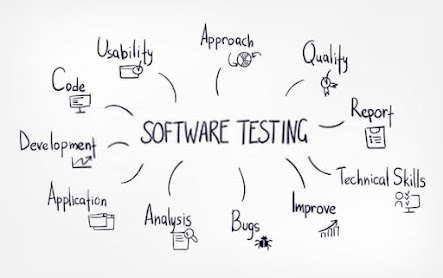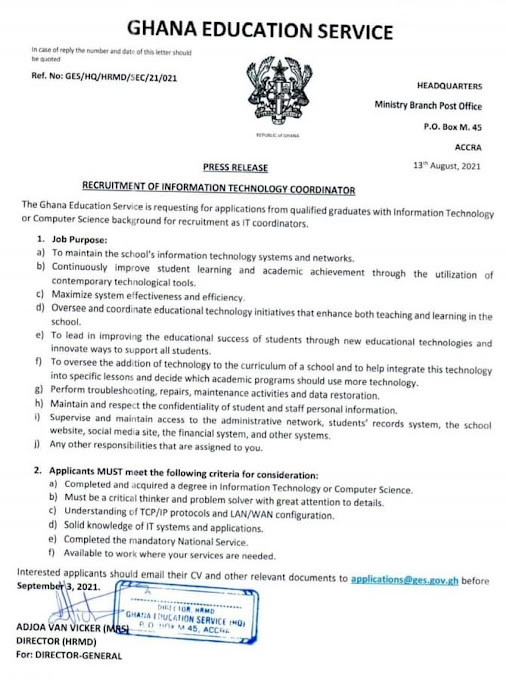Critical
Information Infrastructure (CII), which is also referred to in some
jurisdictions as critical national infrastructure or critical infrastructure,
are institutions of a country that, when disrupted, will disturb the economy, livelihood,
and security of the citizens of that country. These infrastructures are at the
heart of every state, hence any disruptions to them will jeopardize the smooth
running of the state.
Due
to their importance, they have become a major target for terrorists, hackers
and other states as witnessed globally in recent times. According to Jackpotting
& Muncaster (2018), out of over 200 responses received from CII organizations
in the UK, 70% of them had experienced service outages in the past two years.
35% of these outages were due to cyber-attacks.
According
to the World Economic Forum’s 2020 Global Risks Report, cyberattacks on CII (ranked
5th top risk in 2020) is now “the new normal” in the health, energy,
and transportation industries.
Ghana’s
Cybersecurity Act, 2020 (Act 1038) spells out a number of controls (provisions)
for protecting Ghana’s CII. Sections 35 to 40 of the Act are dedicated to protecting
these infrastructures. In my view, the Act itself and the inclusion of these
provisions is largely influenced by the Ghana National Cyber Security Policy
& Strategy document dated March 2014.
In
the presentation of the National Cyber Security Advisor at the 17th
Knowledge Forum of the Ghana Chamber of Telecommunications (7th July
2021), he mentioned the following 13 sectors as CII of Ghana: education, finance,
defence & security, ICT, transportation, health, government, mining,
manufacturing, energy, water, emergency, and food & agriculture.
The
following sections of this article discuss provisions of the Act related to protecting
Ghana’s CII.
Designation and withdrawal
of CII
The
Minister may upon the advice of the Cyber Security Authority (CSA), designate a
computer system or network as a CII if it is deemed necessary for national
security, or the economic and social well-being of Ghanaians.
The
determination of a CII should consider if the infrastructure is necessary for the
security, defence, or international relations of Ghana if it is related to communications
and telecommunications, financial services, public utilities, public transportation,
public key infrastructure, public safety, public health, international business
or communication affecting Ghanaians, the legislature, executive, judiciary,
public services or security agencies.
Designated
CII shall be gazetted, and a procedure for regulating them shall be established
by the Minister.
The
Minister may, also upon the advice of the CSA and by a gazette publication,
withdraw the designation of a CII at any time if the infrastructure is considered
as no longer meeting the defined criteria of a CII.
Registration of CII
The
CSA is mandated to register all CII. It shall determine the registration requirements,
procedure and any other matter relating to the registration.
Duties of owners of CII
Owners
of registered CII shall, within seven (7) days after a change of ownership, inform the
CSA of such change. Contravention of this clause shall result in the payment of
administrative penalty between GH¢6,000 and GH¢120,000.
Owners
of CII shall report cybersecurity incidents within 24 hours after detection to the
relevant sectoral computer emergency response team or the national computer
emergency response team. They shall also cause an audit to be performed on their
infrastructure and submit a copy of the report to the CSA. Contravention of
this clause shall result in the payment of administrative penalty between GH¢3,000
and GH¢120,000.
Management and
compliance audit of CII
The
Minister shall recommend minimum standards for prohibitions regarding the
general management of CII, considered necessary for protecting national
security.
The
CSA shall conduct periodic audits and inspections on CII to ensure their compliance
with the provisions of the Act.
Unauthorized access to CII
A
person shall not access or attempt to access a CII without authorisation. Anyone
who contravenes this clause can be convicted to a fine between GH¢30,000 to GH¢180,000 or imprisoned between 2 years to 5 years, or to both.
If
unauthorized access to a CII results in a serious bodily injury, financial loss
or damage to the infrastructure, the perpetrator can be convicted to a fine
between GH¢60,000 to GH¢600,000 or imprisoned between 5 years to 15 years, or
to both. However, if the unauthorized access is considered to be a terrorist
act, the perpetrator can be imprisoned between 7 years to 25 years.
If
the unauthorized access is related to an organization, the organization can be
convicted to a fine between GH¢300,000 to GH¢600,000. Also, every director, officer,
or management of the organization shall be deemed to have committed this
offence and can be convicted of a fine between GH¢60,000 to GH¢600,000. However,
a person cannot be convicted under this clause if it is proven that he/she
exercised due diligence in preventing the commission of the offence, and the
offence was committed without his/her knowledge or involvement.
Conclusion
The
recent wanton cyber-attacks on CIIs globally give cause to worry as a nation. It
is extremely important for CII to cooperate with the Cyber Security Authority
to safeguard the security, economy, and safety of Ghana.
Compliance
with the stipulations of Act 1038 ought to be taken seriously, irrespective of the
sector (Private or public) and industry.
The
Cyber Security Authority ought to collaborate with key stakeholders to create more
awareness on this Act for the general public, owners of CII, the security
agencies, lawyers and the judiciary.
Author
Sherrif Issah (Information
Security Governance, Risk & Compliance Professional, and Director of Communications; IIPGH)
For comments, contact author mysherrif@gmail.com | Mobile: +233243835912
Source: www.iipgh.org
































